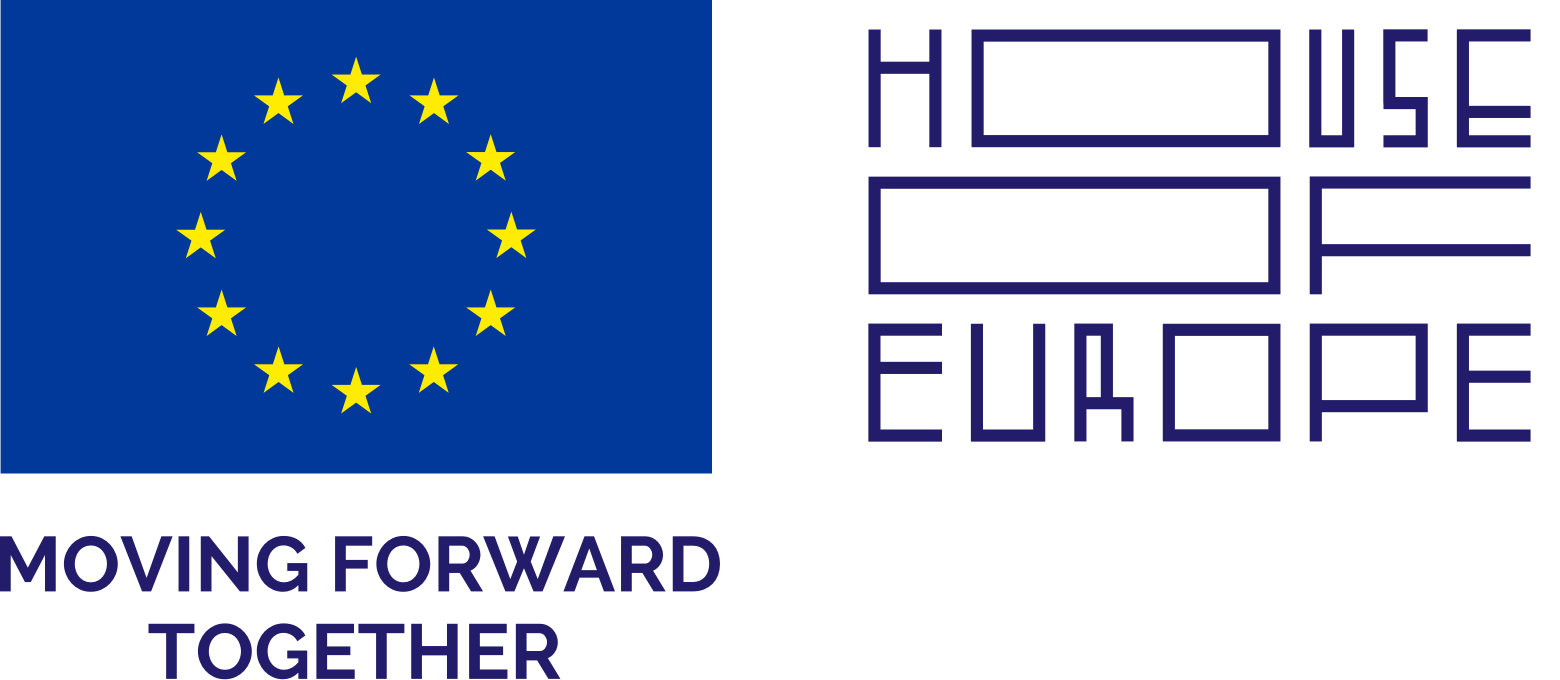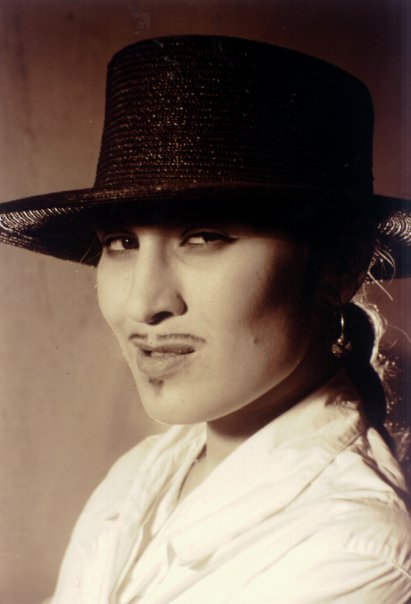

– born in 1968 in Odesa, Ukraine. Ukrainian video artist and painter. In 1985-1988 she studied at the Academy of Civil Engineering and Architecture, in 1990-1993 – in Odesa Pedagogical University (now — Odesa National Mechnikov University) at the Faculty of Art and Graphics, 1995-1998 at the Russian State Cinematography Institute in Moscow at the faculty of directing. She had long-term cooperations with Hlib Katchuk, creating a TV programme about art called «Untitled» (with the support of the Soros Centre for Contemporary Art in Odesa). Lives and works in Odesa.
From childhood on I sensed that I was a painter. I grew up in a deep realization of such a matter, despite the fact that my parents were scientists and did not approve of my choice for art.
For me, art is the outcome of a philosophical exploration of reality that is reflected in an image. This is how it is different from design. Creative process is a continuous and life-lasting one.
Type and form of my work are not presented as answers to the questions that are shaped by the external environment and reality. Rather they are the questions addressed to the spectators. That is why I am so attracted to interactive art. Physical interaction between a spectator and an artwork is an impetus for deep emotional attachment and a method to widen one’s set-up of viewing the world. Social and political developments, as well as new technology advancement, form a basis for the emergence of new ideas and assist in the quest for new artistic expressionism. Art, even the most abstract one, reacts to the developments using the appeal to this social and political resonance. Tech-based art is constantly evolving by opening up new possibilities for artists to express themselves and nudging them to take a look at usual things at a new angle12. In line with that, I am interested in reflecting the abstract ideas and “universal themes” within the raging flow of the present era of change. Given the context, the work called Happiness Video Tape (2001)3 created in cooperation with Hlib Katchuk, is the most symptomatic one. It responds to the topic of the universal in a constantly changing technological world. Both the concept and aesthetics of this work embody my personal motto in the sphere of art, and that is of 2K – beauty and cretinism. One of the video’s goals was to prove the eidetic imagination’s priority over the material world. The video was presented and distributed among the viewers of art exhibitions exclusively on VHS-cassettes. Like conventional happy-chain letters, the video had to be re-recorded 7 times onto the same VHS-cassettes, and the copies had to be handed on physically to other people. Consequently, the number of copies must have been growing, the imagery must have been getting worse, and the sound must have turned into a crack or hiss. Ultimately, the video must have disappeared completely. Despite the destruction, the functionality of such a happy-videotape was not changing 4. Exactly this was proving the dominance of ideas and imaginary over the canons of materialism. In addition, uncontrolled copying (piracy) is the work’s conceptual component which contradicts the principle of copyright law.
***
It seems logical to me that nowadays the gender division in art is not so sharp. It is being erased. I don’t see the difference in what gender a creator is, and don’t find any fundamental differences in the creative discourse among artists of distinct genders. The viewer does not care how an author identifies himself/herself if an artwork is self-sufficient and gripping. The gender division existed as socially-constructed and was imposed through the value system and conventions.Today, therefore, the female artists who for centuries remained outside the art history frames are returning back. On the other hand, it seems that the ultimate victory of feminism in art will be the point when their artworks seize to be separated from the overall artistic discourse as something distinct and incomplete. I was born in Odesa, in a quite free city, even to Soviet standards. There always have been dazzling women there who fully represented the art scene in all aspects of artistic activity. Suffice to mention, Sonia Delone, Liudmyla Yastreb, “Pertsi” collective, “Martynchyky” collective, Larysa Zvezdochetova, Kira Muratova, Karmella Tsepkolenko. Throughout my work and life I have faced gender oppression. Creative life has never been opposed to a family life, and vice versa, the creative life has never hindered the development of a family.
The final version of the statement was edited in collaboration with Kateryna Iakovenko (2022).
1Image: Olha Kashymbekova (together with Gleb Katchuk), screenshot of the digitalized video Antikaraoke, 2001, video. See: https://www.youtube.com/watch?v=0rOejhm-u9s. Courtesy of the artist.2Image: Olha Kashymbekova (together with Gleb Katchuk), screenshot of the digitalized video Flash Royal, 2000, video. See: https://www.youtube.com/watch?time_continue=475&v=9_gi4V0JFUI&feature=emb_logo. Courtesy of the artist.
3Image: Olha Kashymbekova (together with Gleb Katchuk), screenshot of the digitalized video Happiness Cassette, 2001, video, VHS-cassette. See: https://www.youtube.com/watch?time_continue=72&v=hM6Ab9iPalI&feature=emb_logo. Courtesy of the artist.
4Image: Olha Kashymbekova (together with Gleb Katchuk), screenshot of the digitalized video Antikaraoke, 2001, video. See: https://www.youtube.com/watch?v=0rOejhm-u9s. Courtesy of the artist.
– народилась у 1968 році в Одесі, Україна. Українська художниця рухомого зображення, живописець. Протягом 1985-88 років навчалась у Академії будівництва і архітектури, 1990-1993 — в Одеському педагогічному університеті (ніні — Одеський національний університет імені І. І. Мечникова) на художньо-графічному факультеті, та протягом 1995-1998 років — у Всеросійському державному інституту кінематографії в Москві на факультеті режисури. Тривалий час співпрацювала з Глібом Катчуком, створюючи телепрограму про мистецтво “Без назви” (за підтримки Центру сучасного мистецтва Сороса в Одесі). Живе та працює в Одесі.
Я з дитинства відчувала себе художницею. Зросла з усвідомленням цього факту, не дивлячись на те, що мої батьки займалися наукою і не схвалювали мій вибір на користь мистецтва.
Для мене мистецтво — це результат філософського дослідження реальності, що відображено в образі. Цим воно і відрізняється від дизайну. Творчий процес є безперервним і триває все життя.
Тип і форма висловлювання моїх робіт не є відповіддю на питання, які визначає зовнішнє середовище і реальність. Це радше, питання адресоване глядачеві. Тому інтерактивне мистецтво для мене таке привабливе. Фізична взаємодія глядача з роботою це привід для тісної емоційної взаємодії та спосіб розширити систему світосприйняття. Соціальні та політичні події, розвиток нових технологій постійно формують ґрунт для появи нових ідей та допомагають у художньому пошуку. Мистецтво, навіть найбільш абстрактне, реагує на події, апелюючи до цього соціального і до політичного резонансу. Технологічне мистецтво постійно модернізується, відкриваючи митцеві нові можливості для висловлювання, та змушуючи художника/художницю поглянути на звичні речі під іншим кутом12. Натомість, мене більше цікавить відображення абстрактних ідей та “вічних тем” у вируючому потоці нинішніх часів змін. У цьому контексті найбільш показовою є робота “Відеокасета щастя” (2001)3, створена у співавторстві з Глебом Катчуком, вона також відповідає темі “вічного” у мінливому технологічному світі. Концепція та естетика цієї роботи повністю утілюють мій особистий девіз в мистецтві — принцип 2К (краса та кретинізм). Однією з цілей відео було довести пріорітетність ейдичної уяви над матеріальним світом. Відео демонструвалось і поширювалося серед глядачів на виставках виключно на VHS-касетах. Як і традиційні “листи щастя” (happy-chain letter), його необхідно було 7 разів переписати на такі саме VHS-касети і передати копії іншим людям. Відповідно, кількість копій мала збільшуватись, а саме зображення само пошкоджуватись, звук мав перетворювався на тріск чи шипіння, і згодом відеоробота мала зникнути взагалі. Але від цієї деструкції функція “касети щастя” не змінювалась4. Це і доводило перевагу ідеї та уяви над законами матерії. Крім того, неконтрольоване копіювання (піратське поширення) є концептуальною складовою твору, що принципі суперечить системі авторського права.
***
Мені здається логічним те, що у наші дні гендерний поділ у мистецтві не є таким гострим, він стирається. Я не бачу різниці у тому, якої статі творець та не знаходжу базових відмінностей у творчому дискурсі серед художників різних статей. Глядачеві все одно, як себе ідентифікує автор/авторка, якщо твір є самодостатнім та цікавим. Цей поділ існував як соціальний і був нав’язаний через систему цінностей та традицій. Тож сьогодні повертаються у мистецтво ті художниці, які протягом століть залишалися поза кадром історії мистецтва. З іншого боку, мені здається, що головною перемогою фемінізму у мистецтві буде те, коли творчість художниць перестануть виокремлювати із загального мистецького дискурсу як щось окреме та неповноцінне. Я народилася в Одесі, у місті досить вільному, навіть за радянських часів. Тут завжди були яскраві жінки, які досить представляли художню сцену в усіх аспектах артистичної діяльності. Досить згадати Соню Делоне, Людмила Ястреб, групу “Перці”, групу “Мартинчики”, Ларису Звездочетову, Кіру Муратову, Кармелла Цепколенко. Протягом своєї діяльності та життя я стикалась з гендерними утисками. Творче життя ніколи не протиставлялось сімейному і, навпаки, творчість не заважала розвитку родині.
Переклад з російської Катерини Яковленко.
Текст написано у співпраці з кураторкою Катериною Яковленко (2022).
1Зображення: Ольга Кашимбекова (спільно з Глібом Катчуком), Скрін-шот діджіталізованого відео Флеш-рояль, 2000, Відео. Див. https://www.youtube.com/watch?time_continue=475&v=9_gi4V0JFUI&feature=emb_logo. Надано авторкою.2Зображення: Ольга Кашимбекова (спільно з Глібом Катчуком), Скрін-шот діджіталізованого відео Касета щастя, 2001, Відео, VHS-касета. Див. https://www.youtube.com/watch?time_continue=72&v=hM6Ab9iPalI&feature=emb_logo. Надано авторкою.
3Зображення: Ольга Кашимбекова (спільно з Глібом Катчуком), Скрін-шот діджіталізованого відео Антикараоке, 2001, Відео. Див. Надано авторкою.
4Зображення: Ольга Кашимбекова (спільно з Глібом Катчуком), Скрін-шот діджіталізованого відео Флеш-рояль, 2000, Відео. Див. https://www.youtube.com/watch?time_continue=475&v=9_gi4V0JFUI&feature=emb_logo. Надано авторкою.